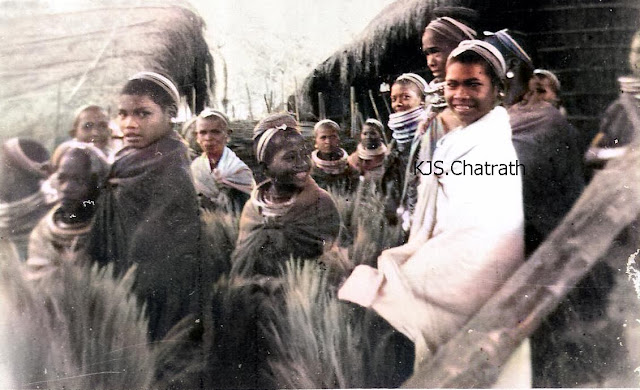'A visit to Bonda Hills, Odisha 55 years back' - recalls K J S Chatrath
I visited the Bonda Hills for the first time in 1968 when I was under training in the undivided Koraput district of Odisha. There was no road and we had to climb/walk for about 19 kms. I went there again in 2001 and noted that there were improvements. Road had been built for around 10 kms and there was a Kanyashram or tribal girls hostel nearby.
The Bonda people are a tribal people who currently live in the hills of
Odisha’s Malkangiri district in India. There are two different Bonda tribes:
the Upper Bondas with a population of 6,700 who are the most isolated from
mainstream Indian society, and the Lower Bonda with a population of 17,000.
Upper Bondas have almost no connection to the outside world.
On both the occasions I had a meal there. They grow brown rice which is
almost roundish and has a pleasant aroma.
The Bondas are generally semi-clothed, the women wear thick silver neck
bands. The Bonda attire is explained in a legend relating to the Ramayana. According to it, some Bonda women chanced upon Sita Ji who was bathing at a pond in the Bonda hills and, seeing her naked, they
sniggered. Enraged, Sita cursed them to a life where they would be condemned
to remaining naked and having their heads shaven. When the Bonda women
pleaded forgiveness, Sita gave them a piece of cloth she tore off her sari. This explains, according to the legend, why Bonda women have shorn heads
and wear only a ringa, a length of cloth that covers the waist.
I did visit a small pond in the vicinity known as the ‘Sita Kund’.
Their torsos are covered in strings of colourful beads. Bonda women also wear metal rings that cover their necks and bangles on their arms. Since Bonda women hunt and forage for food in the forest it is thought that these ornaments have a function of protecting them from injuries and attacks by wild animals.
Photo taken by me in 1968. Recently colorized.Photo taken by me in 1968. Recently colorized.





_edited_edited%20-%20Copy.jpg)
_edited.jpg)





Comments
Post a Comment